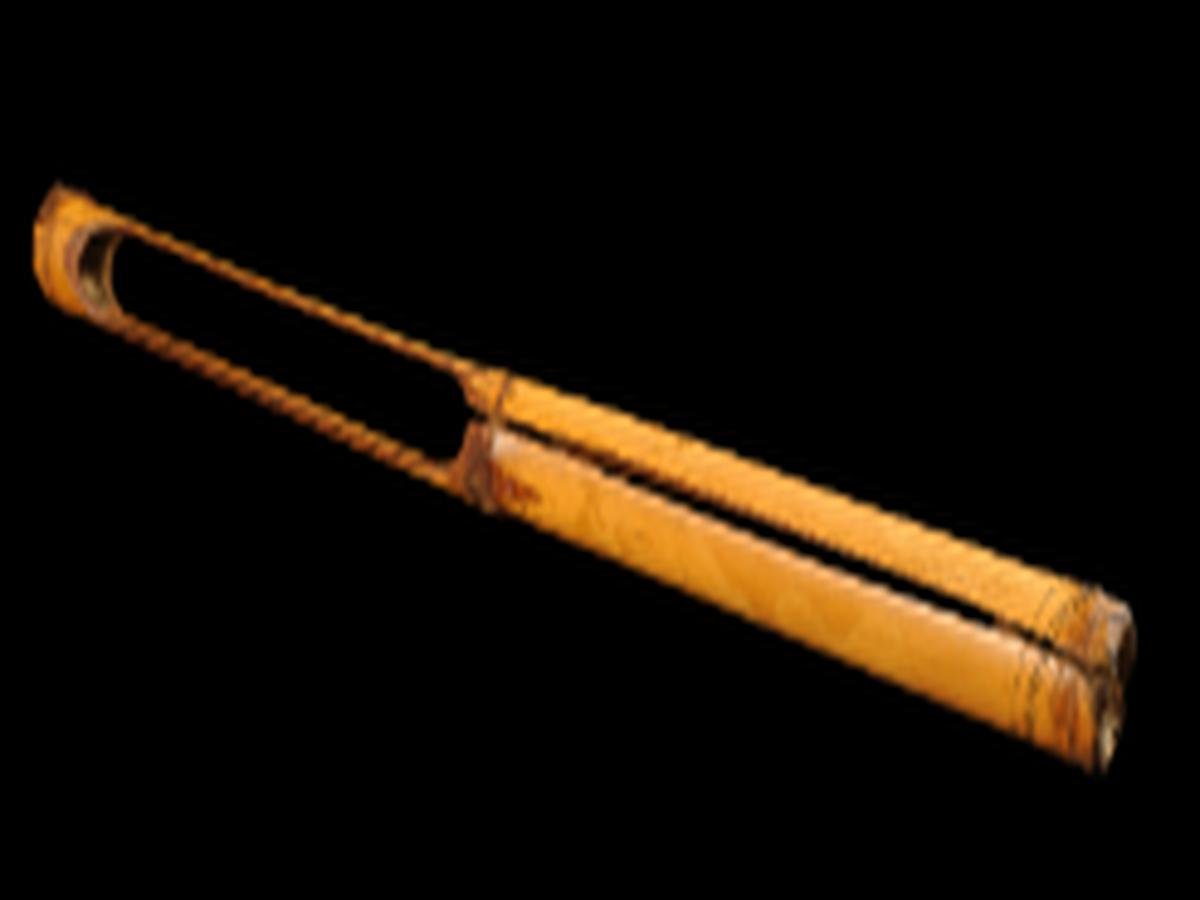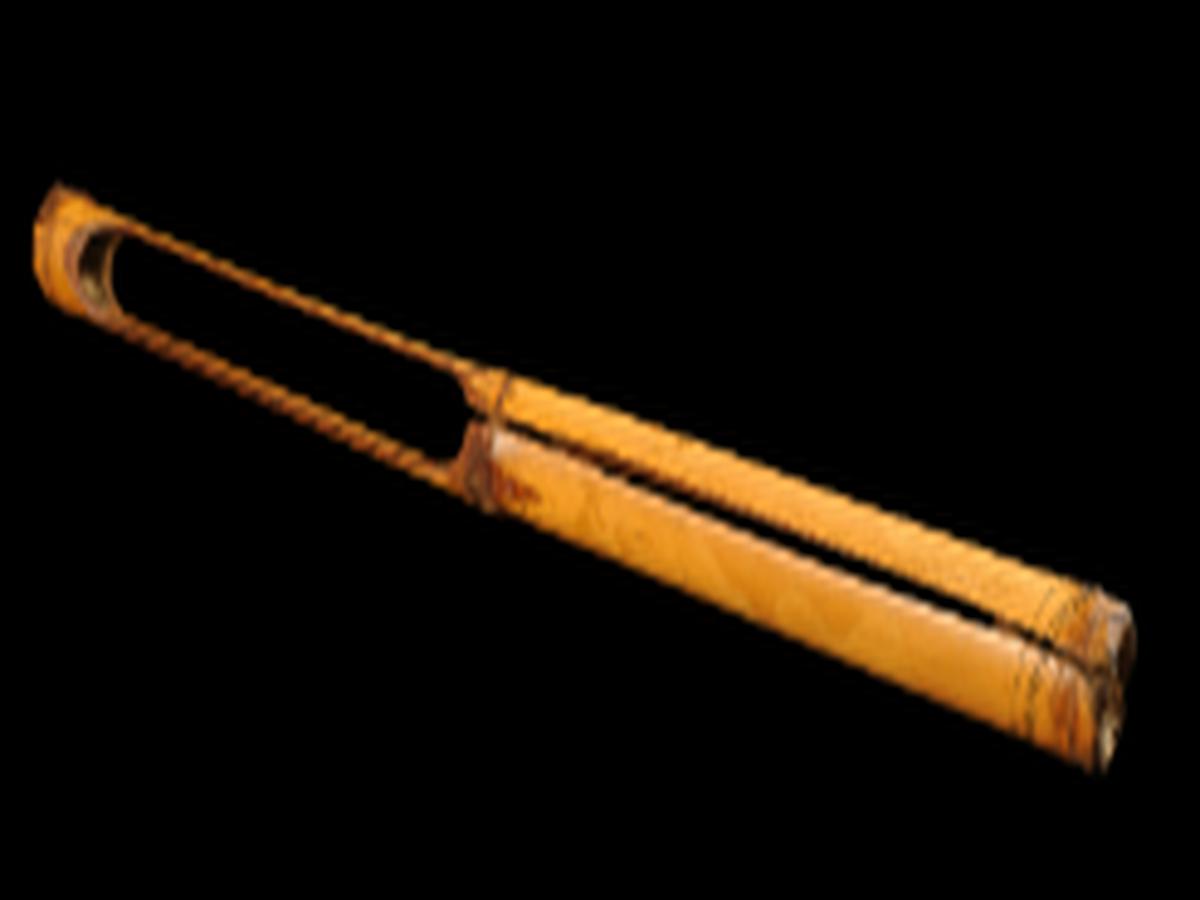State
Tribe Name
Art Type
short description
The Split Bamboo Clapper serves a fundamental function as a primitive clapper or a clapper of sorts for the Khiamniungan Naga, one of the most important tribes in Nagaland and an important tribe of Naga, residing in its eastern land area in the Noklak district adjacent to the nation of Myanmar. It serves as an ingenious design of simple device showcasing their practical knowledge of natural resources and their intimacy with their green forested environment that engulfs them. It consists of a single bamboo piece skillfully split down the middle longitudinally. One end has a deep slit running along the entire length and the other end has been slitted to form a clapper. When the two parts are shaken or struck, it produces a shrill, resonant sound made to frighten the wild animals while foraging in the forest, during hunting trips, or during guarding crops.
Thumbnail

Filter Postion
Left
Filter Background
Off
Theme
Filter Header Image

content
Image

description
The Split Bamboo Clapper serves a fundamental function as a primitive clapper or a clapper of sorts for the Khiamniungan Naga, one of the most important tribes in Nagaland and an important tribe of Naga, residing in its eastern land area in the Noklak district adjacent to the nation of Myanmar. It serves as an ingenious design of simple device showcasing their practical knowledge of natural resources and their intimacy with their green forested environment that engulfs them. It consists of a single bamboo piece skillfully split down the middle longitudinally. One end has a deep slit running along the entire length and the other end has been slitted to form a clapper. When the two parts are shaken or struck, it produces a shrill, resonant sound made to frighten the wild animals while foraging in the forest, during hunting trips, or during guarding crops.
This has been constructed into a non-lethal safe way of keeping wildlife from disturbing the natural balance. It shows how the Khiamniungan tribe puts into practice sustainable living by crafting tools befitting lifestyles in the wild out of strong material, which is very elastic and very abundant around the region in question-bamboo. It mostly became common possession among men and women, especially found to be used in places far from habitation and surrounding habitats close to humans where animals and humans would cross over paths. Now the split-bamboo clapper is kept in cultural museums like the Indian Museum in Kolkata to remind people of the deep-rooted traditions of the Khiamniungan tribe as well as their resourceful co-existence with nature.
This has been constructed into a non-lethal safe way of keeping wildlife from disturbing the natural balance. It shows how the Khiamniungan tribe puts into practice sustainable living by crafting tools befitting lifestyles in the wild out of strong material, which is very elastic and very abundant around the region in question-bamboo. It mostly became common possession among men and women, especially found to be used in places far from habitation and surrounding habitats close to humans where animals and humans would cross over paths. Now the split-bamboo clapper is kept in cultural museums like the Indian Museum in Kolkata to remind people of the deep-rooted traditions of the Khiamniungan tribe as well as their resourceful co-existence with nature.
Image Mode
landscape
promoted
On
Verified
Off
